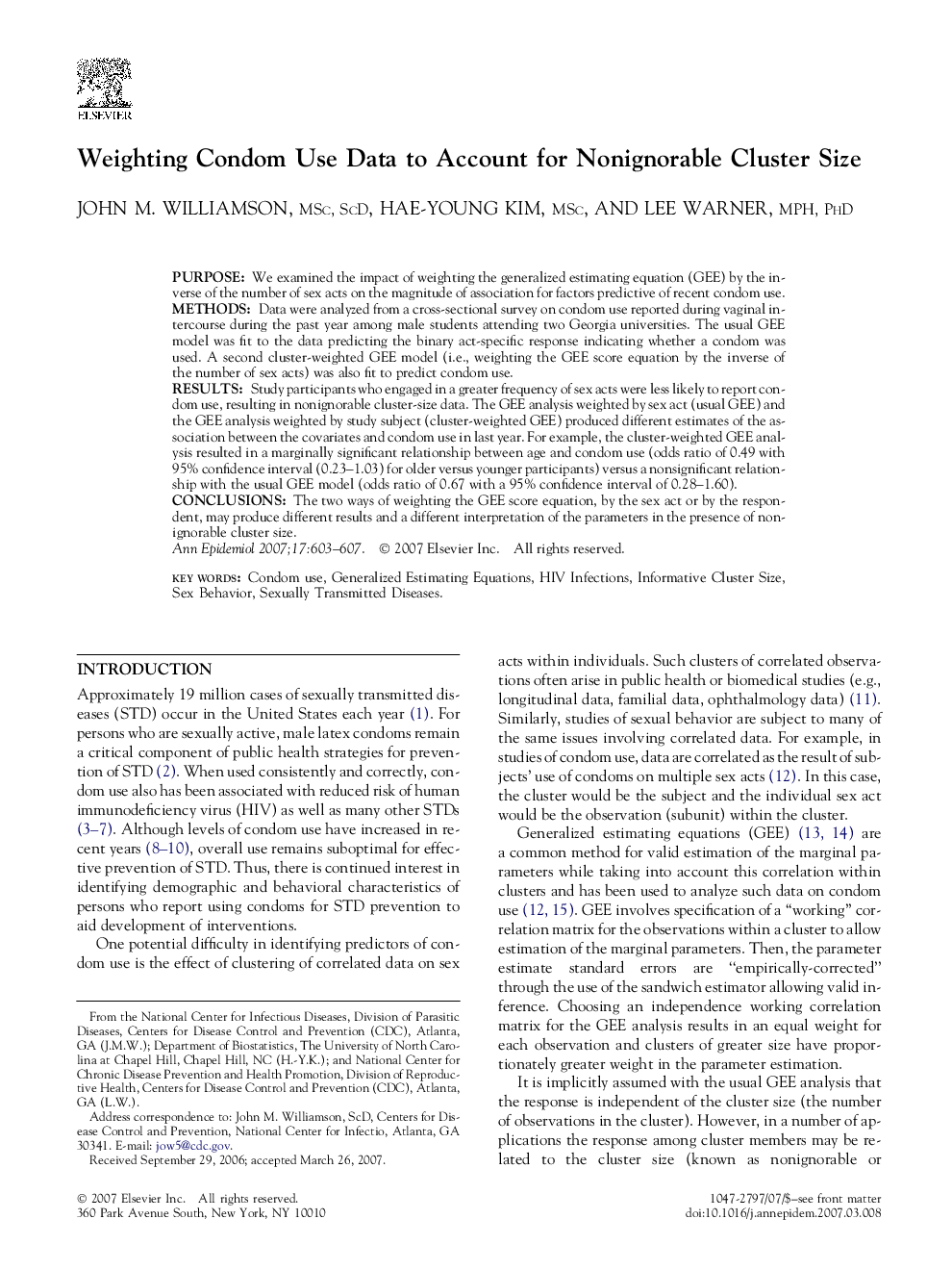| Article ID | Journal | Published Year | Pages | File Type |
|---|---|---|---|---|
| 3445738 | Annals of Epidemiology | 2007 | 5 Pages |
PurposeWe examined the impact of weighting the generalized estimating equation (GEE) by the inverse of the number of sex acts on the magnitude of association for factors predictive of recent condom use.MethodsData were analyzed from a cross-sectional survey on condom use reported during vaginal intercourse during the past year among male students attending two Georgia universities. The usual GEE model was fit to the data predicting the binary act-specific response indicating whether a condom was used. A second cluster-weighted GEE model (i.e., weighting the GEE score equation by the inverse of the number of sex acts) was also fit to predict condom use.ResultsStudy participants who engaged in a greater frequency of sex acts were less likely to report condom use, resulting in nonignorable cluster-size data. The GEE analysis weighted by sex act (usual GEE) and the GEE analysis weighted by study subject (cluster-weighted GEE) produced different estimates of the association between the covariates and condom use in last year. For example, the cluster-weighted GEE analysis resulted in a marginally significant relationship between age and condom use (odds ratio of 0.49 with 95% confidence interval (0.23–1.03) for older versus younger participants) versus a nonsignificant relationship with the usual GEE model (odds ratio of 0.67 with a 95% confidence interval of 0.28–1.60).ConclusionsThe two ways of weighting the GEE score equation, by the sex act or by the respondent, may produce different results and a different interpretation of the parameters in the presence of nonignorable cluster size.
